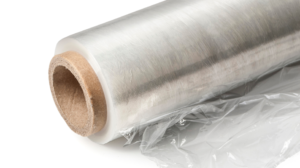Here’s a first: BASF is making products with chemically recycled plastics
German chemical-maker BASF undertakes a project to recover post-consumer plastics using chemical recycling.
Full Article
A new project recently undertaken by Germany-based chemical maker BASF SE is designed to break new ground in plastic waste recycling by using chemical recycling to recover post-consumer plastic that would otherwise go to landfill.
BASF’s ChemCycling technology uses chemical recycling to provide an innovative way to reutilize plastic waste, such as mixed or uncleaned plastics, that often wind up being sent to landfill or burned with energy recovery. But chemical recycling offers another alternative: Using thermochemical processes, these plastics can be utilized to produce syngas or oils. The resulting recycled raw materials can be used as inputs in BASF’s production, thereby partially replacing fossil resources.
And by actually manufacturing products based on chemically recycled plastic waste, BASF is going a step further to become an industry pioneer.
“With our ChemCycling project, we are using plastic waste as a resource,” said Dr. Martin Brudermuller, BASF’s chief technology officer. “We joined forces with partners throughout the value chain to establish a working circular model, and are collaborating closely with customers and partners, which range from waste management companies to technology providers and packaging producers, to build a circular value chain.”
BASF is already developing pilot products, including mozzarella packaging, refrigerator components and insulation panels, with 10 customers from various industries. Manufacturing products that meet the high quality and hygiene standards necessary for food packaging is possible because the ChemCycling products supplied by BASF have exactly the same properties as products made from fossil resources. The first products from the ChemCycling project will be made commercially available shortly.
Here’s how it works: At the beginning of the production chain, BASF feeds oil derived from plastic waste by an oiling process into its Production Verbund, the company’s production sites that integrate production plants, energy and material flows, and logistics. BASF operates six Verbund sites worldwide: two in Europe, two in North America and two in Asia. BASF gets this feedstock for the pilot products from the partner Recenso GmbH, Germany. As an alternative, syngas made from plastic waste can also be used. The first batch of this oil was fed into the steam cracker at BASF’s site in Ludwigshafen in October. The steam cracker is the starting point for Verbund production. It breaks down or “cracks” this raw material at temperatures of approximately 850 degrees C. The primary outputs of the process are ethylene and propylene. These basic chemicals are used in the Verbund to make numerous chemical products. Under the mass balance approach, the share of recycled raw material can be mathematically allocated to the final certified product. Each customer can select the allocated percentage of recycled material.
Before the end products are marketed, however, technological and regulatory conditions must be met. “For one thing, the existing technologies to transform plastic waste into recycled raw materials such as pyrolysis oil or syngas must be further developed and adapted so that consistently high quality is assured,” Brudermuller said. “Furthermore, regional regulatory frameworks will considerably influence to what extent this approach can be established in each market. For example, it’s essential that chemical recycling and the mass balance approach are recognized as contributing to the fulfillment of product and application-specific recycling targets.”
Plastics offer many benefits in technical applications, medicine and everyday life, Brudermuller said, and they are often a better alternative to other materials – the challenge lies in responsibly managing post-consumer plastics. “Functioning waste management systems and responsible consumer behaviour with regard to plastics are crucial to solving problems such as pollution from plastic litter,” he said.



